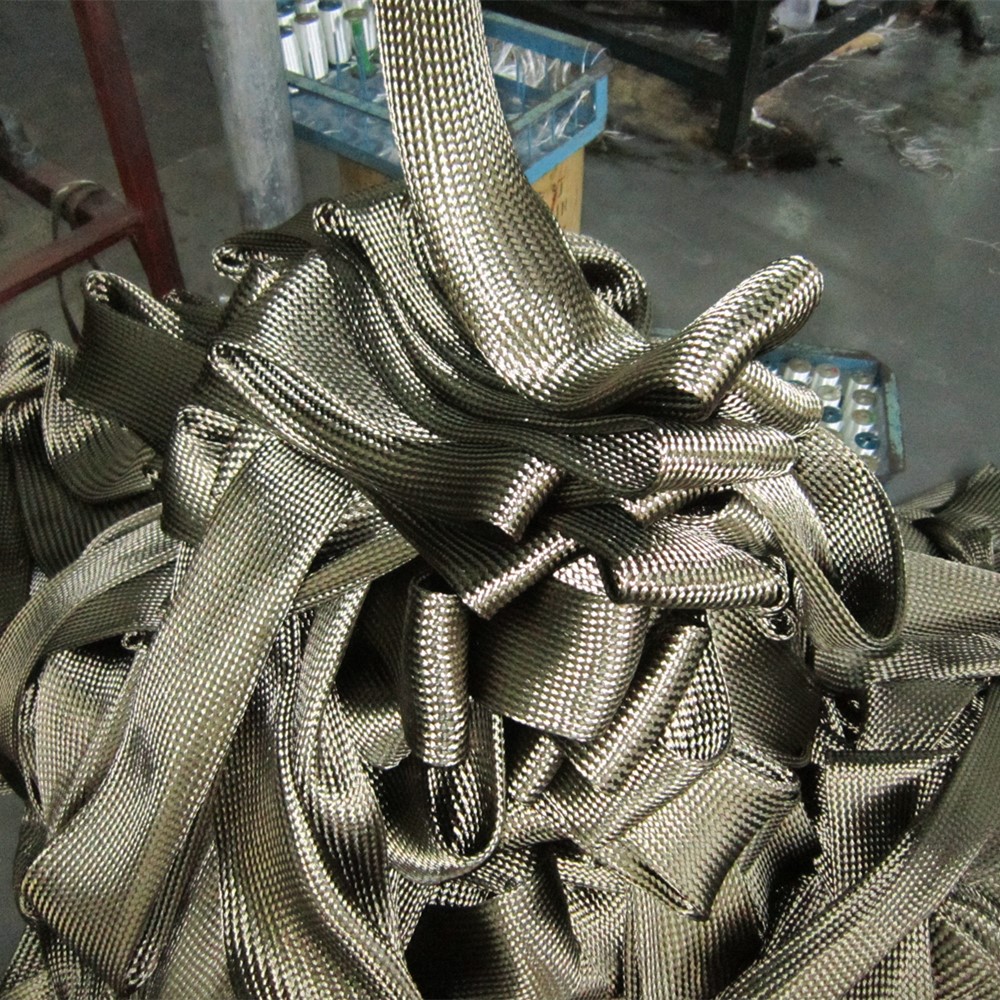Dalam bidang material dan teknik canggih, selongsong serat basal telah muncul sebagai solusi mutakhir untuk meningkatkan kinerja dan daya tahan di berbagai aplikasi. Namun mengapa Anda harus mempertimbangkan untuk memasukkan selongsong serat basal ke dalam proyek Anda? Mari kita jelajahi alasan kuat dan penerapannya di dunia nyata yang menonjolkan keunggulannya.
1. Kekuatan dan Daya Tahan Luar Biasa
Serat basal, yang berasal dari batuan basal vulkanik, memiliki sifat mekanik yang luar biasa. Bahan ini terkenal dengan kekuatan tariknya yang tinggi dan ketahanan terhadap abrasi, menjadikannya bahan yang ideal untuk aplikasi yang memerlukan daya tahan unggul. Misalnya, dalam industri konstruksi, selongsong serat basal digunakan untuk memperkuat struktur beton. Contoh yang menonjol adalah penggunaan selongsong serat basal dalam perbaikan dan penguatan jembatan yang sudah tua. Serat basal meningkatkan kapasitas menahan beban dan memperpanjang umur infrastruktur, memastikan keamanan dan keandalan.
2. Ketahanan Unggul terhadap Faktor Lingkungan
Salah satu fitur menonjol dari serat basal adalah ketahanannya terhadap kondisi lingkungan ekstrem. Tidak seperti bahan tradisional, serat basal tidak rusak saat terkena radiasi UV, kelembapan, atau suhu tinggi. Di sektor otomotif, selongsong serat basal digunakan pada kendaraan berperforma tinggi untuk melindungi komponen sensitif dari panas dan korosi. Misalnya, pabrikan otomotif terkemuka menggunakan selongsong serat basal pada sistem pembuangan mobil sport kelas atas untuk meningkatkan perlindungan termal dan umur panjang.
3. Ringan dan Mudah Ditangani
Meskipun kuat, serat basal lebih ringan dibandingkan bahan penguat lainnya seperti serat baja atau kaca. Karakteristik ini menyederhanakan penanganan dan pemasangan, mengurangi biaya dan waktu tenaga kerja. Dalam industri dirgantara, selongsong serat basal digunakan dalam konstruksi komponen pesawat terbang, dimana meminimalkan bobot sangat penting untuk efisiensi dan kinerja bahan bakar. Kasus penting adalah integrasi selongsong serat basal dalam material komposit pesawat komersial, yang menghasilkan pengurangan bobot keseluruhan dan peningkatan efisiensi bahan bakar.
4. Ramah Lingkungan dan Berkelanjutan
Ketika permasalahan lingkungan menjadi semakin penting, keberlanjutan material menjadi sorotan. Serat basal adalah bahan alami dan ramah lingkungan dengan dampak lingkungan minimal selama produksi. Serat ini tidak memerlukan perawatan kimia apa pun dan menghasilkan emisi lebih sedikit dibandingkan serat sintetis. Misalnya, proyek baru-baru ini yang melibatkan pembangunan gedung ramah lingkungan menggunakan selongsong serat basal dalam elemen strukturalnya. Pilihan serat basal berkontribusi pada sertifikasi keberlanjutan bangunan dan menunjukkan komitmen terhadap praktik ramah lingkungan.
5. Efektivitas Biaya Dalam Jangka Panjang
Meskipun investasi awal pada selongsong serat basal mungkin lebih tinggi dibandingkan bahan konvensional, umur panjang dan manfaat kinerjanya menghasilkan penghematan biaya seiring berjalannya waktu. Daya tahannya mengurangi kebutuhan akan perbaikan dan penggantian yang sering, menjadikannya pilihan hemat biaya untuk proyek jangka panjang. Contohnya adalah penggunaan selongsong serat basal dalam aplikasi kelautan, seperti penguatan lambung kapal. Peningkatan daya tahan selongsong serat basal secara signifikan menurunkan biaya perawatan dan memperpanjang masa pakai kapal laut.
Kesimpulan
Selongsong serat basal menawarkan berbagai keunggulan yang menjadikannya pilihan unggul untuk berbagai aplikasi industri. Kekuatannya yang luar biasa, ketahanan terhadap lingkungan, sifatnya yang ringan, keberlanjutan, dan efektivitas biaya jangka panjang merupakan faktor utama yang mendorong penerapannya di berbagai sektor. Dengan memasukkan selongsong serat basal ke dalam proyek Anda, Anda berinvestasi pada material yang tidak hanya memenuhi tuntutan teknik modern tetapi juga sejalan dengan praktik berkelanjutan untuk masa depan yang lebih baik.
Rangkullah inovasi dan keandalan selongsong serat basal dan rasakan manfaatnya untuk proyek Anda berikutnya.
